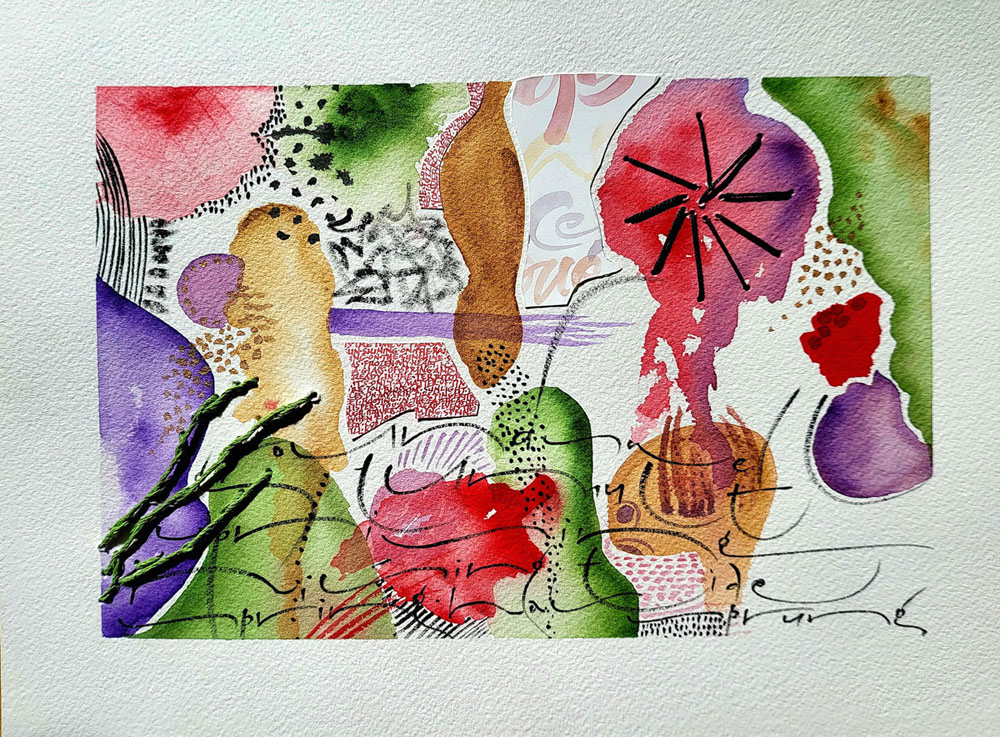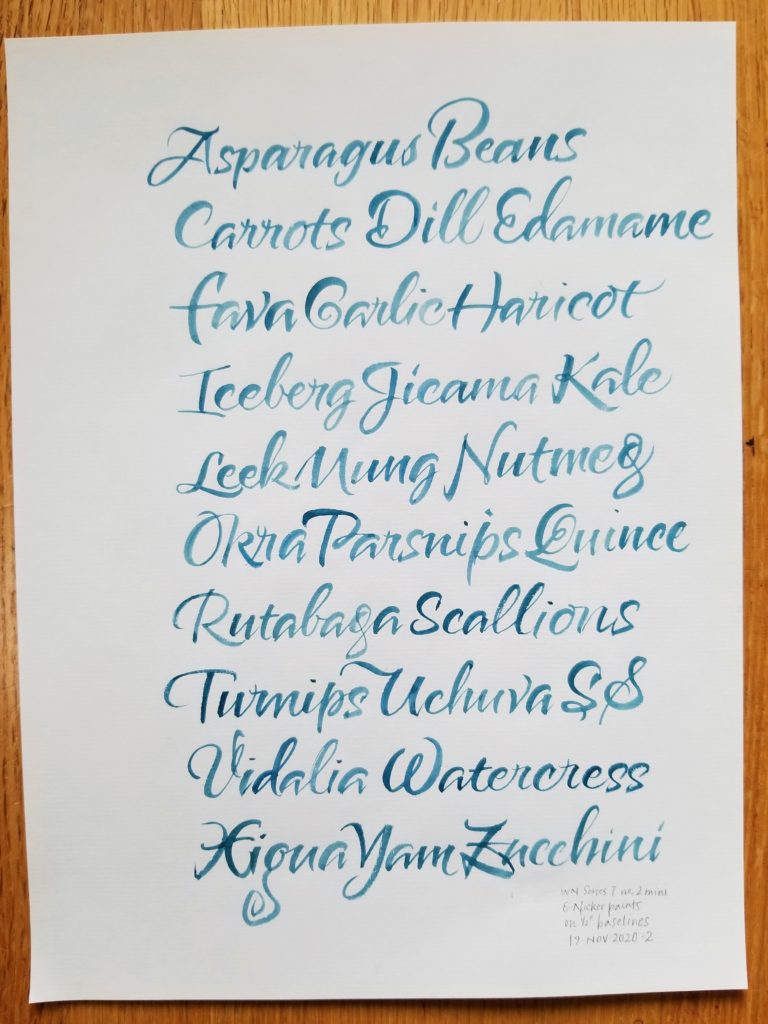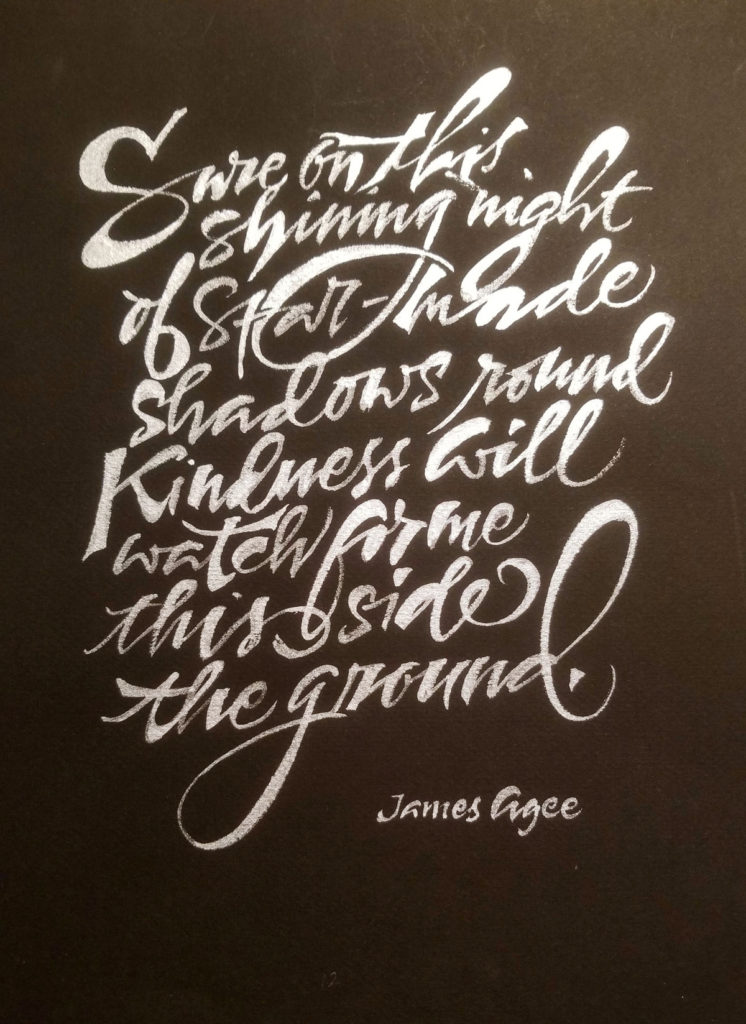
I’m having a good time with these new watercolors … and some sewing. At least a few parts of this page are interesting 🙂

Calligraphy & more — the studio of Beth Lee, Bozeman, MT

I’m having a good time with these new watercolors … and some sewing. At least a few parts of this page are interesting 🙂

This is one of the calligraphy pieces in my solo show at The Artists Shop. If you happen to be in Missoula, Montana, this month, go by and see it.
Each of the words in this collection apply in some way to these pandemic times.

This is one of my pieces no hanging at The Artists Shop all month long in downtown Missoula, Montana. I’ll be there September 20 & 21. I’d love to see you there!
I have done this basic layout several times since the first time I tried it in 1983. It’s a kind of capstone piece, I guess.
In 1983, I was a rank beginner, and completely self-taught at that point, and I believe it is the first “finished” piece I ever did. Just for, I don’t know, entertainment, here’s an image of that first piece. I’m pretty sure it’s a scan of a photocopy of the original, which I gave to my mother way back then. So young and ignorant I was! But so enthusiastic, and I remain so after all these years.

Have I mentioned how much I’m enjoying Elizabeth McKee’s brush lettering class? Well, it bears repeating. Here are just a few pages of the homework I did in November, the 3rd month of classes.















I’ve mostly been writing with Pentel Color Brushes (all four tips), Winsor & Newton Series 7 pointed brushes (1, 2, 2 mini), and the Pentel Pocket Brush. I’ve mostly been using fountain pen ink, Schmincke gouaches, Winsor & Newton watercolors, Dr. Martin’s Pro White, and FineTec metallic watercolors.
I’m happily balancing this kind of work with the formal, slower work of study in Elmo van Slingerland’s Roman minuscules class through the Society of Scribes … and the geometry and paper handling of folding portfolio folders and fulfilling orders for my ABC portfolios. I’ll post some of my work in the Roman minuscules class next time.
I enjoyed this past weekend’s workshop hosted by Chicago Calligraphy Collective. Taught by Mike Gold, the workshop was entitled “Over and Over”. All weekend we focused on taking one text and lettering it over and over, using different approaches.







My quotation for the workshop was this: “Stare, pray, listen, eavesdrop. Die knowing something. You are not here long.” – Walker Evans. (But if an exercise didn’t lend itself to the quotation, I chose something else.)
In this workshop with Mike Gold, it was instructive to see the work of my fellow workshop students, a gathering of accomplished calligraphers. The work was so widely varied! You can see some of this work on instagram here. The Chicago Calligraphy Collective has really got it going on, especially as an online presence for those of us members who are not local.
Mike Gold is teaching this class to other guilds via Zoom. For instance, the Columbus guild is hosting this workshop October 24 & 25. If you’re interested, sign up!

I am so enjoying a brush lettering class with Elizabeth McKee. She was my very first serious calligraphy teacher, way back in 1988-1989. The homework assignments have included making weathergrams, and this has been perfectly consonant with what I want to do. These past few weeks here in Montana, our dog Zeke and I have simply wallowed in the beautiful autumn. And we’ve enjoyed long walks among the brilliant trees and blessedly clean air and gorgeous sunlight.
Given all this, it’s no wonder that I can’t seem to stop making these weathergrams! I’m addicted to that slightly rough drag of the brush on Kraft paper, the daylight within the strokes as the ink feathers on the paper. And I have been hanging them around the walking trails in Bozeman. (I’m not sure whether to replace the ones that have disappeared, or find another place to put them. If people are taking them as souvenirs, that’s okay. But perhaps they’re simply taking out the trash. Or maybe the deer like them. How to tell?)
Weathergrams were developed by Lloyd J. Reynolds, a calligrapher who had a profound influence in the western US in the 70s and 80s. The form is a sort of Western melange of Japanese tanzaku, haiku, wabi sabi, and more. Weathergrams are not sold but given as gifts or hung from trees and allowed to weather. If you want to know about weathergrams, read Reynolds’ booklet on the subject. And that booklet has been digitized here by The Haiku Digital Foundation Library.
Read more about Lloyd Reynolds at the website of Reed College, where he was a professor for 40 years.